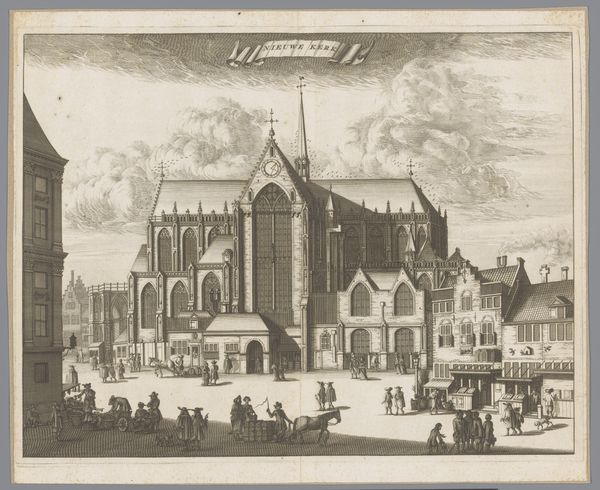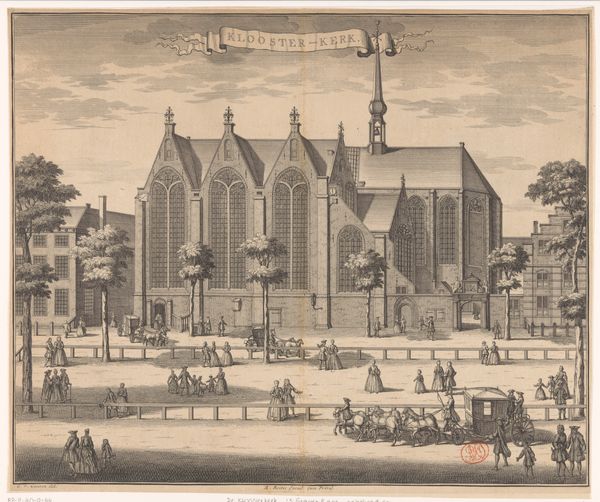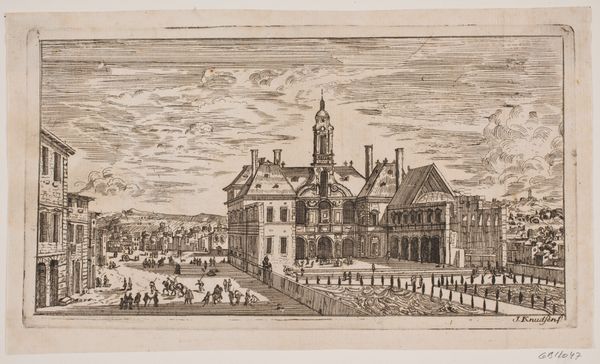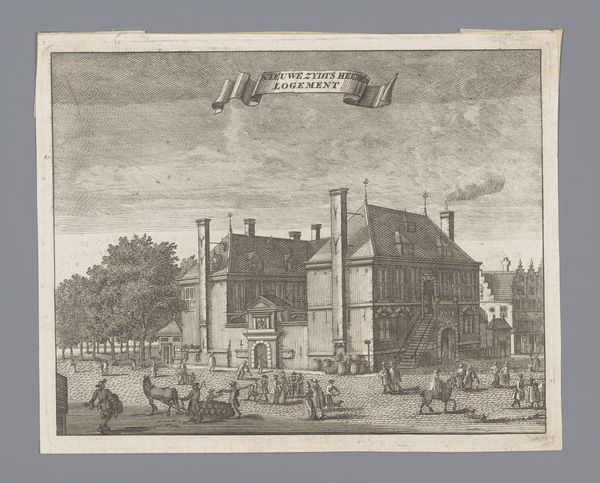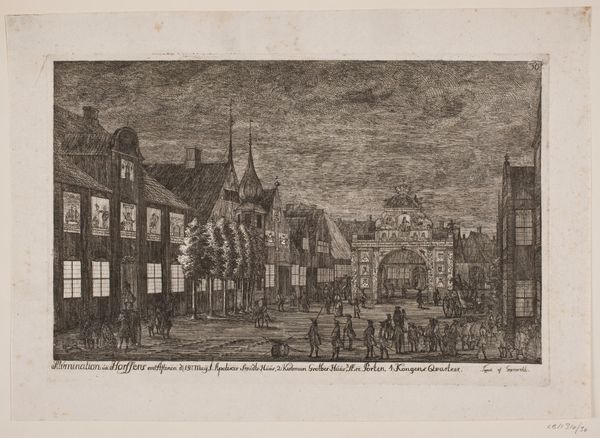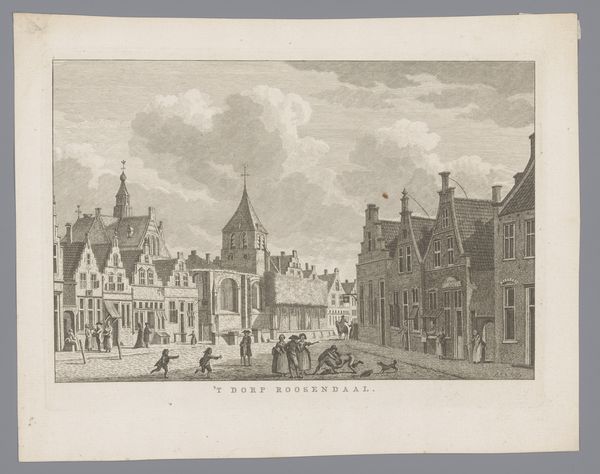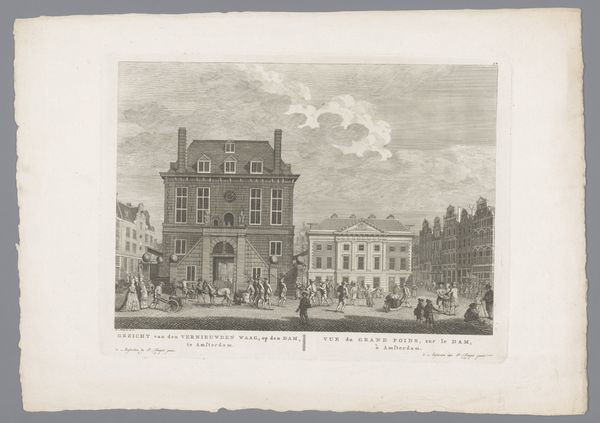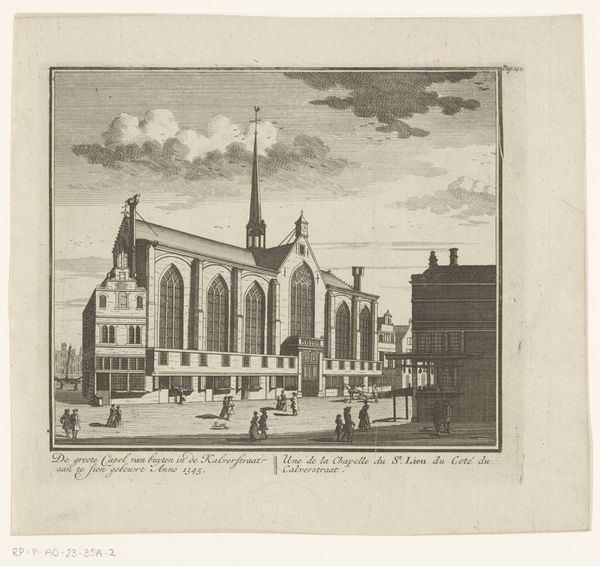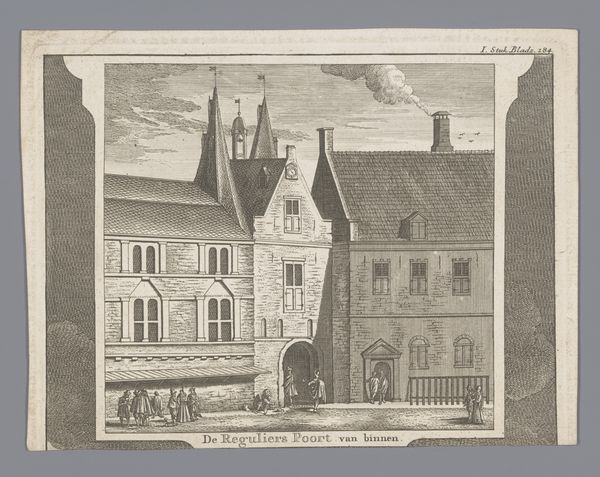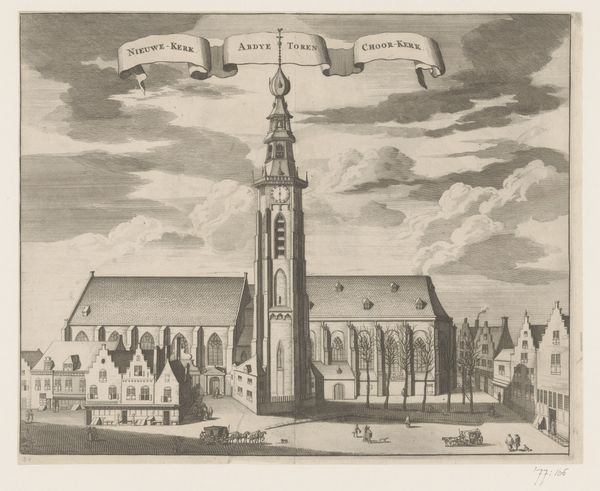
Gezicht op de Sint-Olofskapel (Oudezijds Kapel) te Amsterdam 1693 - 1694
0:00
0:00
anonymous
Rijksmuseum
print, engraving, architecture
#
dutch-golden-age
# print
#
cityscape
#
engraving
#
architecture
Dimensions: height 266 mm, width 345 mm
Copyright: Rijks Museum: Open Domain
Curator: Looking at this cityscape, my first impression is how much activity is concentrated in this square; despite the somber palette, it teems with life. Editor: Indeed. The Rijksmuseum holds this intriguing print, entitled "Gezicht op de Sint-Olofskapel (Oudezijds Kapel) te Amsterdam." It was created between 1693 and 1694. What’s fascinating here is how the image weaves the religious with the secular—a nexus of commerce and spirituality in 17th-century Amsterdam. How do you see this playing out in the symbolism? Curator: I am drawn to the light emanating from the windows of the chapel; there’s a contrast with the surrounding architecture. Consider also the numerous dogs: in some Northern European traditions, they are symbols of loyalty but also base desires, existing on the periphery. It feels almost like a staged drama, with clear hierarchies present even on a social level. Editor: Yes, the visual rhetoric is compelling. And, viewed through the lens of contemporary socio-political awareness, it makes you question: who gets represented, and who is rendered invisible? Consider the perspective—does it empower the viewer, or is there a level of detachment, keeping the everyday person at a distance? This perspective reminds me that this depiction isn’t necessarily ‘neutral’, but conveys specific ideals. Curator: It definitely evokes a sense of societal control—architecture as a mechanism for regulating life within the square, creating a theater for prescribed societal norms. What does the image suggest to us, culturally, beyond just representation? Editor: Well, the Dutch Golden Age saw a boom in printmaking, fueled by trade and a rising middle class. This particular cityscape demonstrates how printed images played a key role in crafting narratives about prosperity, and order within urban spaces. This depiction would surely reach many people, near and far. The very structure of the image serves as an ideological projection of power. Curator: That’s very thought-provoking. Now, looking at this image with an awareness of its role as a document reflecting specific political positions within its time gives a different depth to the print. It is definitely about more than just the location itself. Editor: Absolutely. Understanding how visual imagery reflects and perpetuates societal structures helps us confront inequalities then and even today.
Comments
No comments
Be the first to comment and join the conversation on the ultimate creative platform.
